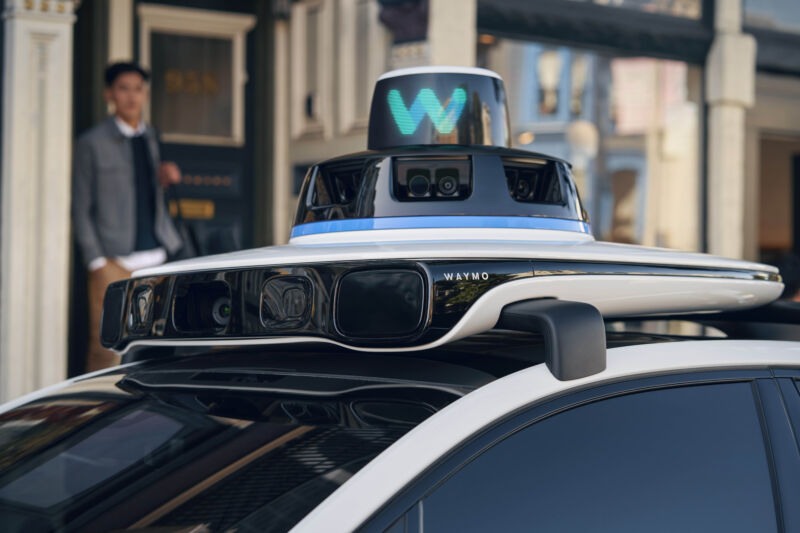
Waymo
Waymo on Wednesday launched new crash knowledge in accordance with the corporate’s first 7.1 million miles of absolutely driverless operations in Arizona and California. The knowledge display that human-driven vehicles are greater than two times as prone to get right into a crash this is reported to the police. And relying on the way you do the maths, human-driven vehicles are 4 to seven occasions much more likely to get into crashes that result in an damage.
Via October 2023, driverless Waymo automobiles have had handiest 3 crashes with accidents—two within the Phoenix house and one in San Francisco. Waymo says all 3 accidents had been minor. If those self same miles have been pushed via standard human drivers in the similar towns, we might have anticipated round 13 damage crashes.
The brand new knowledge comes at a the most important time for the self-driving trade. In October, a girl was once dragged about 20 ft beneath a car via Waymo’s primary rival, Cruise. Since then, Cruise has misplaced its CEO, laid off 24 p.c of its group of workers, and suspended driverless operations national.
Cruise’s implosion has left Waymo because the undisputed chief within the driverless taxi marketplace. But it surely has additionally heightened public skepticism about self-driving generation normally. So Waymo goes to need to paintings onerous to persuade the general public that its generation no longer handiest has the possible to make the roads more secure at some point, however is already doing so now.
The brand new knowledge supplies Waymo recent ammunition to make that case. If Waymo can deal with its very good protection document within the coming months and years, it’s going to have a robust argument for endured enlargement irrespective of what occurs in the remainder of the trade.
7 million miles, 3 accidents
Since their inception, Waymo automobiles have pushed 5.3 million driverless miles in Phoenix, 1.8 million driverless miles in San Francisco, and a couple of thousand driverless miles in Los Angeles in the course of the finish of October 2023. And right through all the ones miles, there have been 3 crashes severe sufficient to motive accidents:
- In July, a Waymo in Tempe, Arizona, braked to steer clear of hitting a downed department, resulting in a three-car pileup. A Waymo passenger was once no longer dressed in a seatbelt (they had been sitting at the buckled seatbelt as a substitute) and sustained accidents that Waymo described as minor.
- In August, a Waymo at an intersection “started to continue ahead” however then “slowed to a forestall” and was once hit from at the back of via an SUV. The SUV left the scene with out exchanging data, and a Waymo passenger reported minor accidents.
- In October, a Waymo car in Chandler, Arizona, was once touring within the left lane when it detected every other car drawing near from at the back of at top velocity. The Waymo attempted to boost up to steer clear of a collision however were given hit from at the back of. Once more, there was once an damage, however Waymo described it as minor.
The 2 Arizona accidents over 5.3 million miles works out to 0.38 accidents according to million car miles. One San Francisco damage over 1.75 million miles equals 0.57 accidents according to million car miles. Crucial query is whether or not that’s roughly than you’d be expecting from a human-driven car.
After making sure changes—together with the truth that driverless Waymo automobiles don’t shuttle on freeways—Waymo calculates that related human drivers reported 1.29 damage crashes according to million miles in Phoenix and three.79 damage crashes according to million miles in San Francisco. In different phrases, human drivers get into damage crashes thrice as ceaselessly as Waymo within the Phoenix house and 6 occasions as ceaselessly in San Francisco.
Waymo argues that those figures in reality understate the distance as a result of human drivers do not document all crashes. Impartial research have estimated that a couple of 3rd of harm crashes move unreported. After adjusting for those and different reporting biases, Waymo estimates that human-driven automobiles in reality get into 5 occasions as many damage crashes in Phoenix and 9 occasions as many in San Francisco.
To assist assessment the find out about, I talked to David Zuby, the executive analysis officer on the Insurance coverage Institute for Freeway Protection. The IIHS is a well-respected non-profit this is funded via the insurance coverage trade, which has a robust passion in selling car protection.
Whilst Zuby had some quibbles with some main points of Waymo’s method, he was once most often certain concerning the find out about. Zuby concurs with Waymo that human drivers underreport crashes relative to Waymo. However it is onerous to estimate this underreporting charge with any precision. In the long run, Zuby believes that the real charge of crashes for human-driven automobiles lies someplace between Waymo’s adjusted and unadjusted figures.
